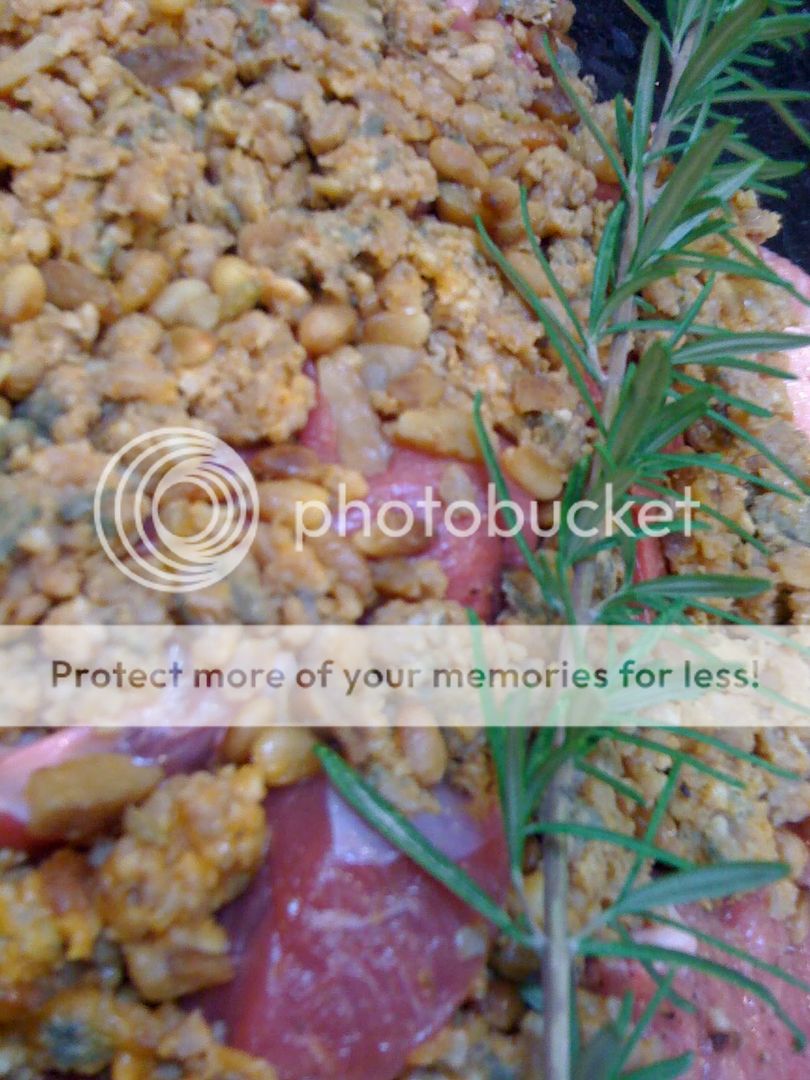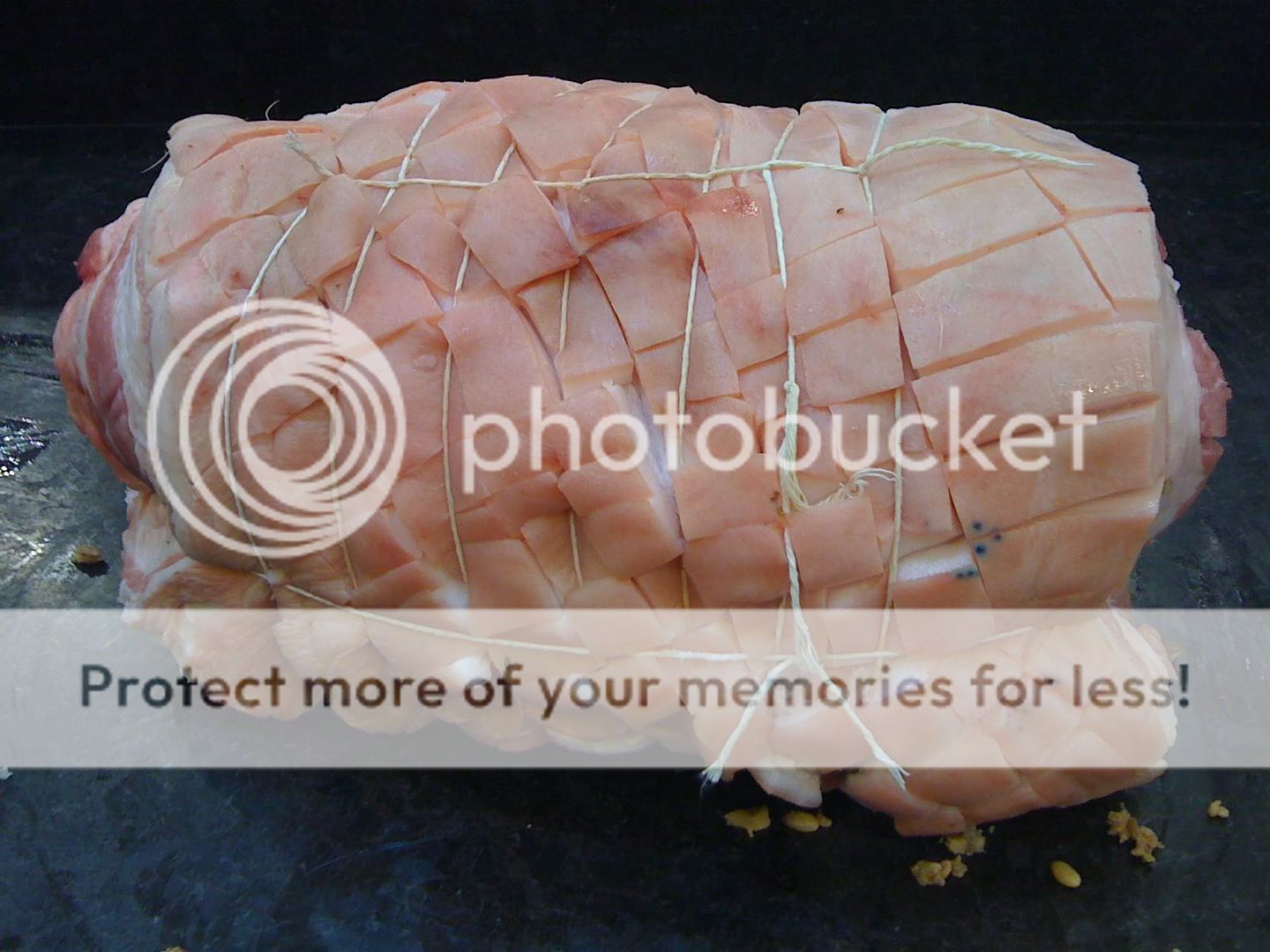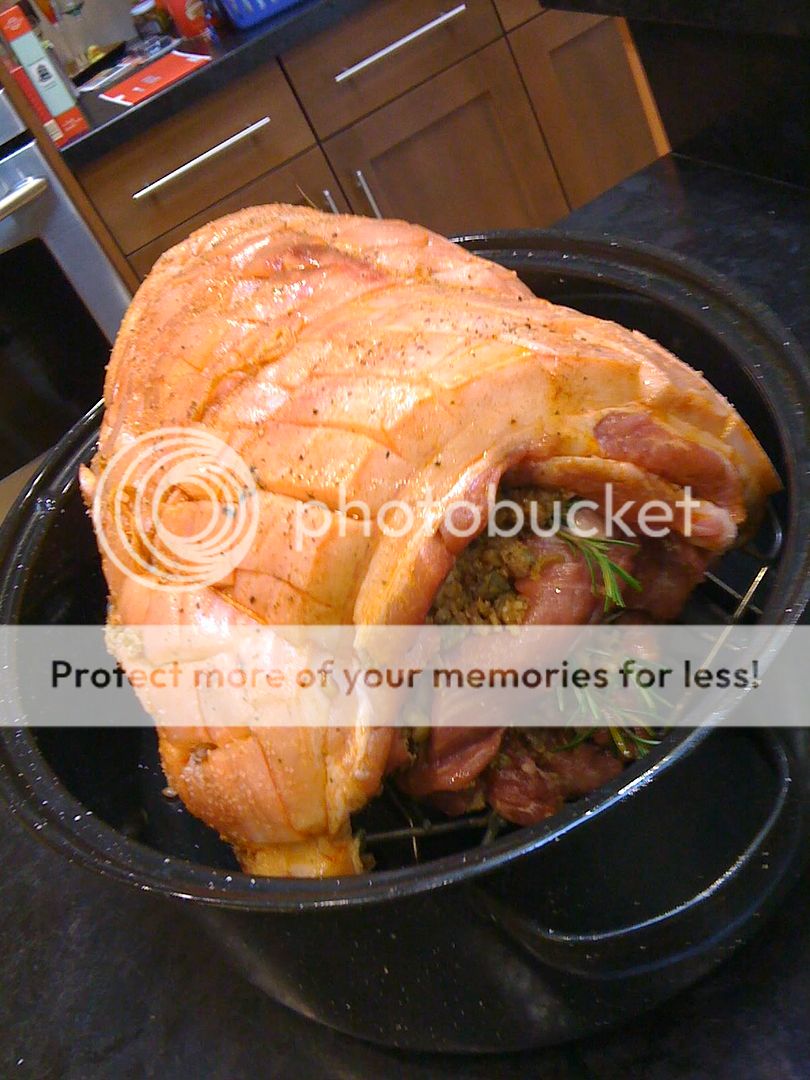I love pork. Pig is a miracle beast that gives us more of the things I love to eat than any other animal. Bacon, pancetta, guanciale, lardo are among the myriad of cured forms of the blessed pig. Ribs and pulled pork are among my favorites from my smoker. Then of course there is the king of porcine preparations, the Kalua Pig from a Hawaiian Imu (for another blog entry). In my ongoing pursuit of pig pickin perfection I decided to make Porchetta (pronounced “porketta”) for this years Christmas dinner.
Porchetta has it’s roots in central Italy near Rome. In its most traditional preparation it is a completely de-boned whole young pig that is heavily salted, stuffed with various herbs, garlic, fennel etc then trussed and slow roasted to perfection.
Traditional Porchetta Preparation:
This is a preparation that is usually reserved for big celebrations or festivals and is by no means the most commonly found preparation. More often, one will find a porchetta vendor at local green markets and street fairs serving porchetta sandwiches on panino. Though the dish originated in central Italy, it has spread all over the country. In this case the preparation is a savory, moist boneless roast pork shoulder rather than whole pigs. This would be the preparation I would seek to emulate though it would be served as an entrée within a larger meal as opposed to as a sandwich.
I procured my pork shoulder where I purchase most of my high-end meats, from Dittmers Wurst Haus in Mountain View, CA. If you are in the Bay Area and haven’t been to Dittmers, you must. It’s Disneyland for carnivores. They have literally, EVERYTHING and will butcher it to order while you wait. Fantastic place.
What you’ll need:
- A de-boned and butterflied pork shoulder
- ~1lb of bulk Italian sausage
- Big handful of sage leaves
- 2-3 sprigs of rosemary
- Pine Nuts (toasted)
- Chopped chestnuts (toasted)
- Large egg
- Garlic
- Salt
- Pepper
- Olive Oil
- Kitchen Twine
Count on around 4-5 hours cooking time for this.
First off, get your oven up to 350deg and find a roasting pan and rack that will hold this massive mound of meat then prepare your stuffing. Rough chop your sage leaves and garlic, toast your pine nuts and chestnuts in a dry pan (careful, its easy to burn them). Combine by hand in a bowl with an egg and a liberal quantity of salt & pepper. I pre-cooked my stuffing. In retrospect, I’d have been better off not doing so and suggest you don’t pre-cook yours either. You’ll see why in a bit.
Using a razor blade, score the skin in a crosshatch pattern then flip it over. You’ll see some pretty large bundles of muscle tissue. You’ll want to score those deeply as well (see photo below) to give more exposure to the meat for your seasoning and the flavors in your stuffing. Then lay out your pork shoulder on the counter to get it up to room temperature rub the whole thing down with olive oil and season it generously on both sides.
Once it’s up to room temperature you can begin to apply your stuffing. Use your hands. It’s more fun and it’ll work better. Spread the stuffing around fairly evenly. Do your best to force it down into the cuts you made in the larger muscle bundles then lay a couple of rosemary sprigs across the meat.
Now is the only hard part. You need to roll this thing up from the open end toward the skin end so you have the skin on the outside of the bundle and then truss it together. If you don’t know how to truss up a roast, do a youtube search for “tying boneless roast”. It’s easy, it just takes to long to explain via text. When you are done it ought to look like this:
Oiled, seasoned and ready for the oven.
Insert a meat thermometer or your oven’s temp sensor into the absolute center of the bundle of meat and pop it in the pre-heated oven. You don’t have much to do at this point. Enjoy the time with your family.
After an hour or so, check on your roast. You should have a pretty good amount of fat in the bottom of your roasting pan at this point. Use this to begin basting your roast about once every 30min. If you don’t have any juices/fat pour a few cups of stock in the pan and use that. By about ½-way through your cooking time the skin will begin to get good and brown. Keep an eye on it when you are basting. You want crispy on the outside and brown yet juicy underneath, not a dark and bark-like the way you’d get if this were a smoked pork shoulder. If the skin is getting a bit too dark you can tent the roast with foil to prevent it from getting overdone.
As you approach the appropriate internal temperature (160deg) use an instant read thermometer to check a couple of other places in the roast. This is pork after all we want to make sure it’s fully cooked. Once you have 160deg throughout, remove the roast from the oven and allow it to rest for at least 30min before carving.
This is where I would have put a photo of my fully-cooked porchetta had I not been yakking with my family and forgotten to take the photo….woops.
Pull the sprigs of rosemary out and remove the twine from the roast and enjoy a couple of crunchy bits of pig-candy (the crispy skin) and start carving this thing.
You’ll notice the top layer of the roast is off and the stuffing is a little bit loose. This is why I suggest you not pre-cook your stuffing. It’ll bind a bit better if your stuffing (with egg that I didn’t use) goes in un-cooked. It was delicious anyway, just less aesthetically pleasing.
The porchetta came out moist, savory, juicy and absolutely delicious. Again, I dropped the ball on taking photos due to all the commotion of getting dinner on the table. We garnished each slice with a sage leaf, a few leaves of rosemary and a couple of nuggets of the crispy delicious skin and served it with some delicious cannelloni that my step-mother made, an artichoke/spinach casserole that my wife prepared and crusty bread. It was a fantastic meal shared with my family that everyone enjoyed.











No comments:
Post a Comment